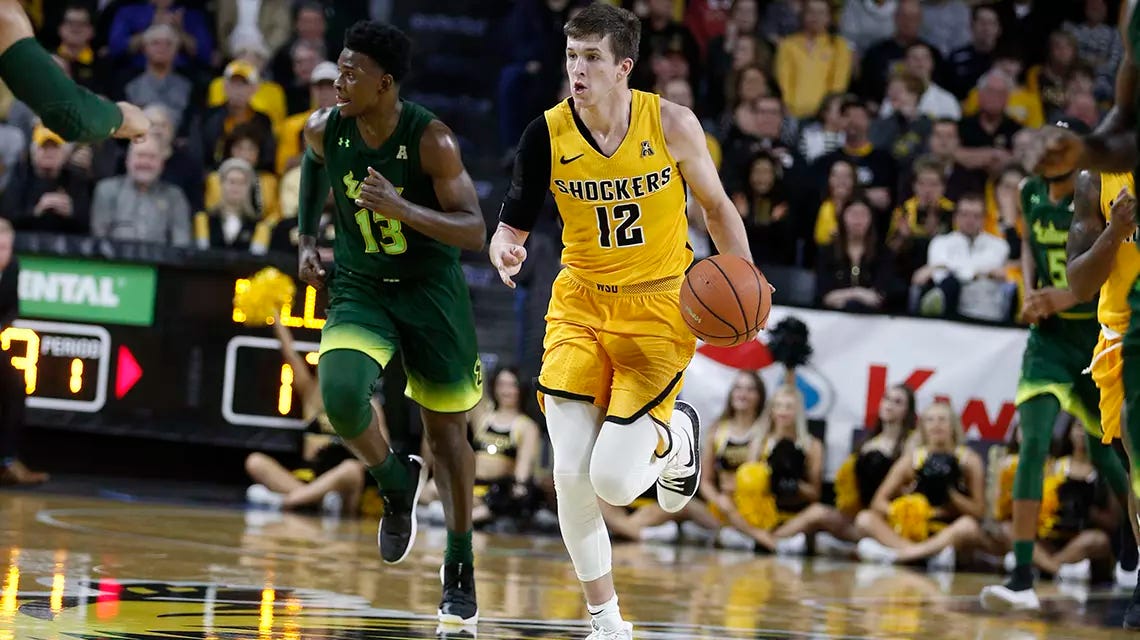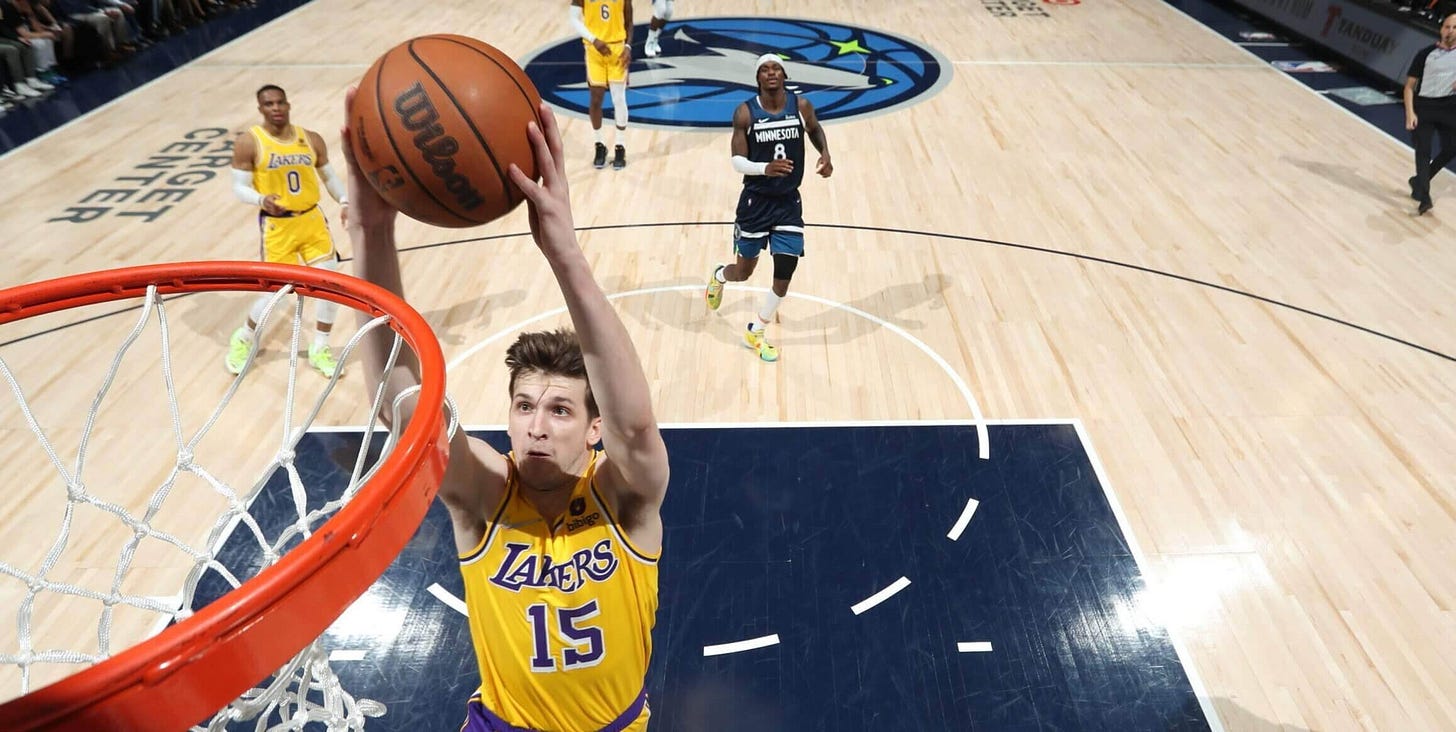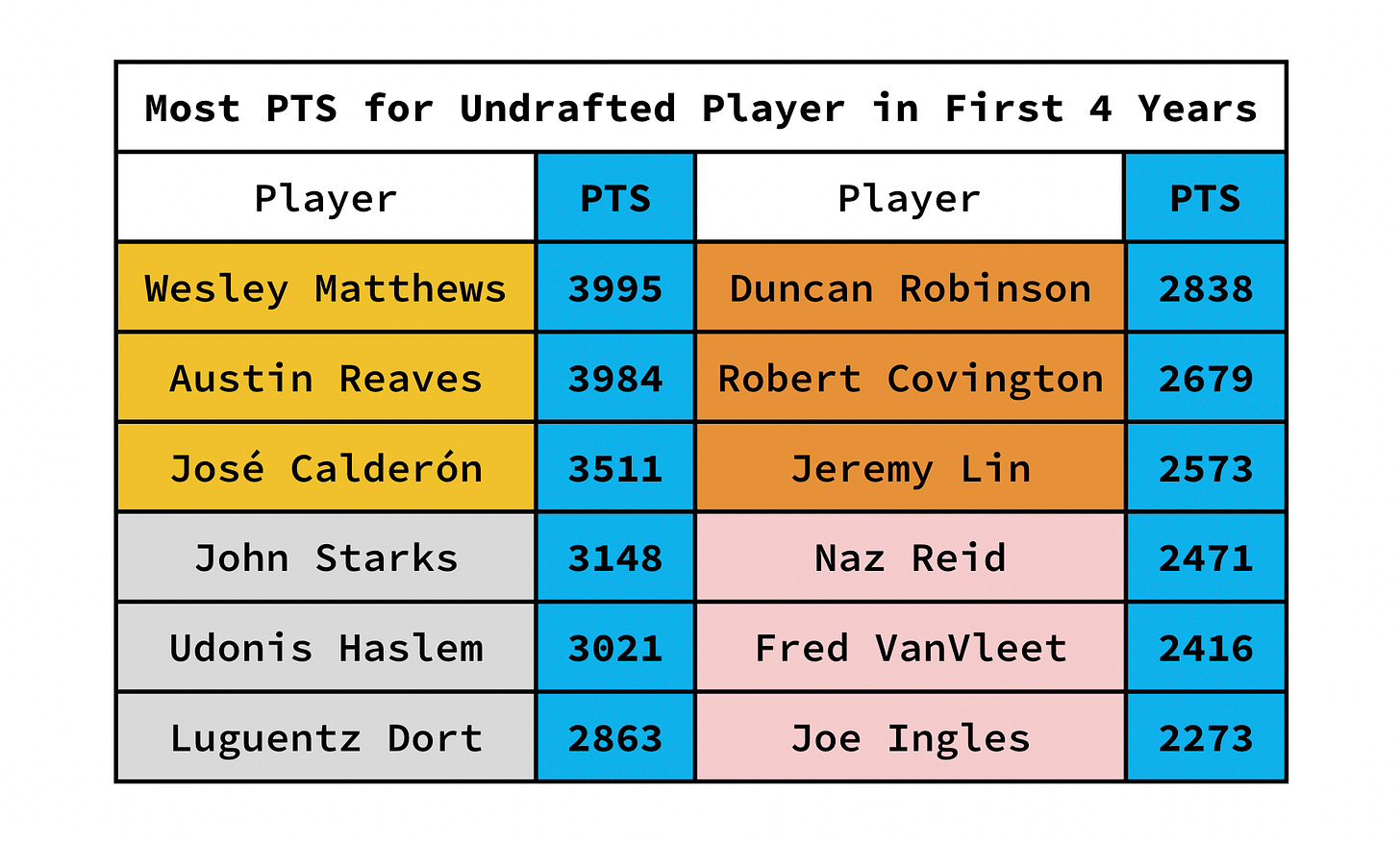In his last nine games, Austin Reaves has averaged 23.9 points, 4.8 rebounds, 6.7 assists, and 1.7 steals while steering the Lakers to a 7-2 record in the midst of the dramatic aftermath of the Luka Doncic trade. He’s being praised non-stop by LeBron James on the floor and on social media, he’s hitting logo threes in primetime ESPN games, and becoming one of the main attractions in the most star-studded city in the world.
But Reaves doesn’t hear the outside noise. He still arrives to every game in sweats while his teammates spend hours every week putting together extravagant runway outfits and he doesn’t run his mouth or exude much personality like many others as they settle into the glitzy Hollywood life.
That’s because Reaves—although shining under the bright lights of LA—isn’t built for the cameras, the glamour, and everything else that comes with playing for the Lakers with LeBron James in Los Angeles.
Austin Reaves grew up in Newark, Arkansas—a town with a population of fewer than 1,200 people. Only about 100 people attended Reaves’ school and he spent much of his time frolicking around the meadows and fields of Newark with his friends and siblings.
Basketball wasn’t much of a reality for Austin. He was more of a baseball player to begin with. More so, it was the fact that basketball wasn’t a reality for anybody in his town. Nobody played AAU, the high school team was an afterthought, and a scrawny white kid wasn’t about to change that.
There had been 54 NBA players from Arkansas to play in the NBA prior to Austin, but not a single one was from Newark. Of those 54 players, two were white. Dusty Hannahs went undrafted in 2019 and played a grand total of four games in his NBA career. Jerry Rook played a single year in the ABA in 1970, averaging 3.0 PPG before retiring.
For someone like Austin who spent most of his time goofing around with his friends and playing baseball, only played one year of AAU basketball, and had no precedent of somebody like him making the league, there wasn’t a thought in his mind that told him he could make a career out of playing basketball.
It wasn’t until Austin’s brother Spencer started dragging Austin to the gym when he was in 8th grade. Spencer is a great player too—he currently plays professionally in Europe—but he clearly saw something in Austin that not even Austin could see in himself.
Spencer forced Austin to wake up early to play basketball and made him put up 500 shots every day. The results paid off immediately. Reaves was a starter on the Cedar Ridge high-school basketball team in his freshman year and guided the team to two state championships in his first three years.
In his senior season, he scored 73 points in a 117-115 victory over Forrest City and tallied 32.5 PPG, 8.8 RPG, and 5.1 APG while leading Cedar Ridge to a 35-3 record and their third state championship in Austin’s tenure. He averaged 43.3 points in the state tournament, shattering the previous record, and cementing himself as the best high school player in the state of Arkansas.
But making the leap to college wouldn’t be a walk in the park for the 18-year-old Austin. Because he had hardly any AAU experience under his belt and came from a small 3A school, there weren’t many eyes on Austin from the national level. He ended up accepting an offer from Wichita State, who made the NCAA tournament three years prior and had been led by Fred VanVleet—one of the best undrafted players in the NBA today.
In his freshman season at Wichita State, Austin would face yet another obstacle. He had a nagging right shoulder injury and would be forced to undergo surgery in the offseason. In his sophomore season, he took a slight leap, averaging 8/3/2 on 45/42/83 splits, but still wasn’t in the same stratosphere as draft-hopeful players.
Austin wanted to prove his worth at a higher level and didn’t feel that the Wichita State coaching staff was allowing him to reach his ceiling as the primary ball-handler in a dominant offense. He elected to transfer to Oklahoma prior to his junior season, and it ended up being the best decision of his young life.
After a year off due to the NCAA’s redshirt rules, Austin took off. He averaged a career-high 14.7 points, grabbed 5.3 boards a game, as well as 3.0 assists in his first year, and upped every one of those numbers plus all of his shooting splits in his senior season when he averaged 18.3/5.5/4.6 on 44/31/87 shooting and received All-Big 12 honors. Austin was finally given the reigns to run a college offense and he was succeeding, ultimately leading Oklahoma to second round appearance in the NCAA tournament.
Naturally, Austin’s next step was the NBA draft. Many draft boards had him slated as a mid-to-late second-round pick, but every team rumored to select him was planning on offering Austin a two-way contract (essentially half G-League, half NBA roster) instead of guaranteeing him an NBA roster spot.
At one point in the draft process, Austin and his camp received word that the Lakers would sign him to a two-way deal should he go undrafted. While it still wasn’t an ensured roster spot, Austin glamoured at the idea of lacing up for the most decorated franchise in NBA history next to LeBron James and Anthony Davis. Sure enough, he would go undrafted and the Lakers would pick him up off the street.
Austin had done it. He had reached uncharted territory. Once a directionless kid from a town with no history of top-tier basketball success, he had achieved the impossible and reached the NBA.
Three nights ago, I was up late watching the ending of the Lakers’ 110-102 victory over the Trail Blazers. I turned the game on because LeBron James was in the midst of dropping yet another forty-piece, but I stayed because of Reaves.
The guy was flying all over the court. His 32 points were an afterthought—is was the selflessness on offense, the ruthless attacks to the basket, the confidence to shoot the ball with LeBron open on the other side of the floor, the charges he took, his steals and scores in transition, and every little thing that doesn’t show up on the stat sheet that captured my attention.
After dropping a cool 23 last night against the Nuggets, I started to wonder: where does Reaves stack up against every other undrafted player in NBA history?
Using ESPN, Bleacher Report, Sporting News, Reddit, my personal opinion, and some recency bias for the relevancy of the article, I cumulated the 25 best undrafted NBA players since 1970 (before 1970, the draft was much shorter and many of the best players were not only undrafted but had immediate success in their first season). Reaves is on that list. Here are the other 24.
Just by looking at the list, you can infer that Reaves has asserted himself as one of the best pure hoopers among undrafted players. But do the stats back it up? By using his 19.1 PPG average to this point this season, I calculated how many points Reaves is on pace to score in his first four years in the league and compared it to every other player’s first four years. Here are the top 12 all-time totals for undrafted players.
Reaves only trails Wesley Matthews, who never cleared 16.4 points per game for a season in his entire career. Reaves has already cleared that mark, averaging 19.1 PPG this season despite playing next to LeBron James and Anthony Davis all year. 19.1 PPG for an undrafted player is nearly historic.
Obviously, nobody cares about points if it doesn’t translate to wins. So, I calculated Reaves’ projected win shares at the end of this season and compared it to the other 24 top undrafted players through their first four years.
Reaves only trails Matthews (again), Udonis Haslem (the first four years were during the D-Wade and Shaq era), and José Calderón (legitimately deserving of 24.0 win shares.
Win shares and points don’t encompass the totality of basketball. Reaves will not win four Defensive Player of the Year awards like Ben Wallace. He most likely won’t ever be the passer Calderón was or the catch-and-shooter Duncan Robinson is, but at this point, I believe it’s safe to say that Reaves is well on his way to becoming one of the greatest undrafted players ever with perhaps the highest peak ever.
13 years ago, the young kid from Newark, Arkansas couldn’t have fathomed being in conversations like this one. 13 years later, his dream is becoming reality.












Sources confirm that Reaves did “frolick” in his younger years